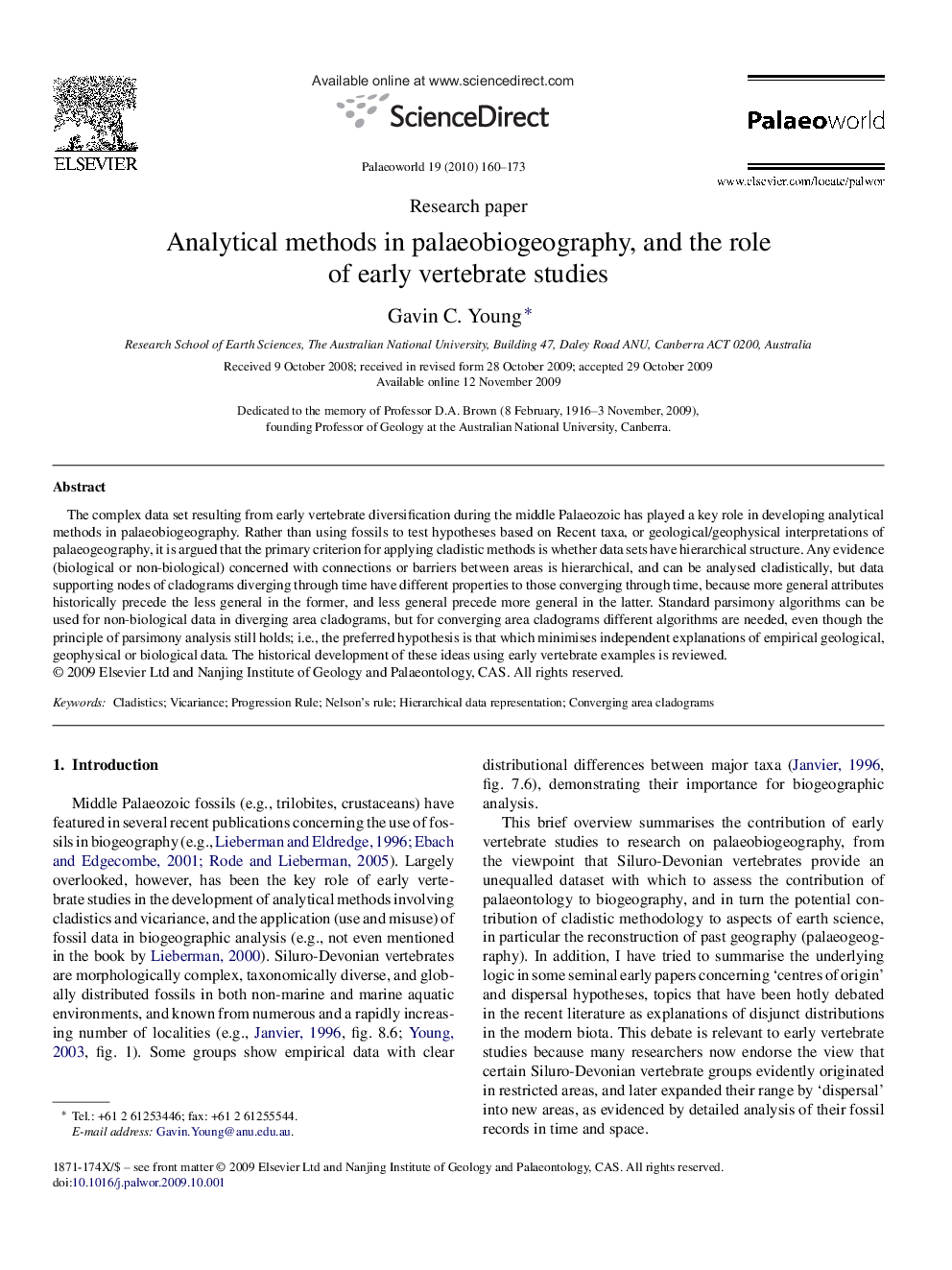| Article ID | Journal | Published Year | Pages | File Type |
|---|---|---|---|---|
| 4749907 | Palaeoworld | 2010 | 14 Pages |
Abstract
The complex data set resulting from early vertebrate diversification during the middle Palaeozoic has played a key role in developing analytical methods in palaeobiogeography. Rather than using fossils to test hypotheses based on Recent taxa, or geological/geophysical interpretations of palaeogeography, it is argued that the primary criterion for applying cladistic methods is whether data sets have hierarchical structure. Any evidence (biological or non-biological) concerned with connections or barriers between areas is hierarchical, and can be analysed cladistically, but data supporting nodes of cladograms diverging through time have different properties to those converging through time, because more general attributes historically precede the less general in the former, and less general precede more general in the latter. Standard parsimony algorithms can be used for non-biological data in diverging area cladograms, but for converging area cladograms different algorithms are needed, even though the principle of parsimony analysis still holds; i.e., the preferred hypothesis is that which minimises independent explanations of empirical geological, geophysical or biological data. The historical development of these ideas using early vertebrate examples is reviewed.
Keywords
Related Topics
Physical Sciences and Engineering
Earth and Planetary Sciences
Palaeontology
Authors
Gavin C. Young,
